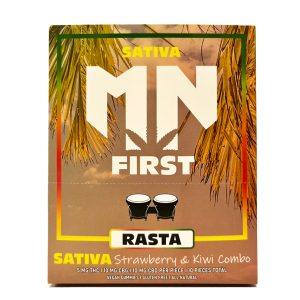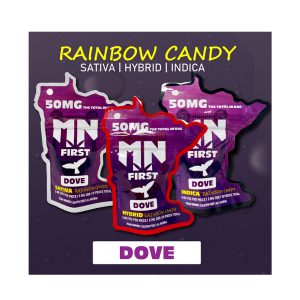**Group 1: Defining Pain and Adverse Effects**
– Pain is defined by the experiencing person’s description.
– Health care providers ask questions to understand the pain, including intensity, location, triggers, and duration.
– Effective pain management strategies are based on the description of pain.
– Clear communication between patient and provider is essential for effective pain management.
– Different pain management methods have varying benefits and risks.
– Overuse of treatments can lead to ineffective results or side effects.
– Balancing treatment without causing harm is crucial.
– Pain is a natural signal of an underlying issue that should not be masked.
– Communication challenges between patients and healthcare providers are common.
**Group 2: Physical Approaches to Pain Management**
– Physical medicine and rehabilitation combine physical techniques, exercises, and behavioral therapy.
– Spa therapy, kinesiotape, physical therapy, and exercise are recommended alternatives to opioids.
– Exercise interventions like aerobics, tai chi, and yoga can improve pain management.
– Manipulative therapy and education on pain processing can provide relief.
– Heat therapy, exercises, and manipulative therapy are used in physical medicine and rehabilitation.
– Walking, tai chi, yoga, and Pilates promote mind-body harmony and improve pain management.
– Physical activity reduces inflammation, boosts energy, and enhances overall health.
**Group 3: Pain Management Techniques**
– Transcutaneous electrical nerve stimulation (TENS) helps regulate chronic pain.
– TENS is a portable device that uses electrical impulses for pain control.
– Acupuncture involves needle insertion to relieve pain.
– Light therapy and sound therapy are effective in managing pain.
– Interventional procedures like epidural steroid injections and spinal cord stimulators target nociceptors for pain control.
– Intra-articular ozone therapy efficiently alleviates chronic pain in knee osteoarthritis patients.
**Group 4: Psychological Approaches to Pain Management**
– Acceptance and Commitment Therapy focuses on behavior change and psychological flexibility.
– Cognitive Behavioral Therapy helps in changing negative thought patterns and coping strategies.
– CBT has shown benefits in managing chronic pain and improving physical and psychosocial disability.
– Lifestyle changes, coping skills development, and improving sleep patterns are integral parts of CBT for pain management.
– CBT plays a crucial role in improving the overall quality of life for individuals with chronic pain.
**Group 5: Effectiveness and Challenges of Cognitive Behavioral Therapy (CBT)**
– CBT helps patients understand pain, thoughts, emotions, and behaviors.
– It targets healthy activities, cognitive restructuring, and coping skills for pain and stressors.
– CBT is effective in managing chronic pain conditions and reducing physical and psychosocial disability.
– Challenges include understanding key components, effectiveness determination, and systematization.
– CBT interventions focus on improving sleep patterns, coping skills, and overall quality of life for individuals with chronic pain.
Pain management is an aspect of medicine and health care involving relief of pain (pain relief, analgesia, pain control) in various dimensions, from acute and simple to chronic and challenging. Most physicians and other health professionals provide some pain control in the normal course of their practice, and for the more complex instances of pain, they also call on additional help from a specific medical specialty devoted to pain, which is called pain medicine.

| Occupation | |
|---|---|
| Names | Physician |
Occupation type | Specialty |
Activity sectors | Medicine |
| Description | |
Education required |
|
Fields of employment | Hospitals, clinics |

Pain management often uses a multidisciplinary approach for easing the suffering and improving the quality of life of anyone experiencing pain, whether acute pain or chronic pain. Relief of pain in general (analgesia) is often an acute affair, whereas managing chronic pain requires additional dimensions.
A typical multidisciplinary pain management team may include: medical practitioners, pharmacists, clinical psychologists, physiotherapists, occupational therapists, recreational therapists, physician assistants, nurses, and dentists. The team may also include other mental health specialists and massage therapists. Pain sometimes resolves quickly once the underlying trauma or pathology has healed, and is treated by one practitioner, with drugs such as pain relievers (analgesics) and occasionally also anxiolytics.
Effective management of chronic (long-term) pain, however, frequently requires the coordinated efforts of the pain management team. Effective pain management does not always mean total eradication of all pain. Rather, it often means achieving adequate quality of life in the presence of pain, through any combination of lessening the pain and/or better understanding it and being able to live happily despite it. Medicine treats injuries and diseases to support and speed healing. It treats distressing symptoms such as pain and discomfort to reduce any suffering during treatment, healing, and dying.
The task of medicine is to relieve suffering under three circumstances. The first is when a painful injury or pathology is resistant to treatment and persists. The second is when pain persists after the injury or pathology has healed. Finally, the third circumstance is when medical science cannot identify the cause of pain. Treatment approaches to chronic pain include pharmacological measures, such as analgesics (pain killer drugs), antidepressants, and anticonvulsants; interventional procedures, physical therapy, physical exercise, application of ice or heat; and psychological measures, such as biofeedback and cognitive behavioral therapy.





